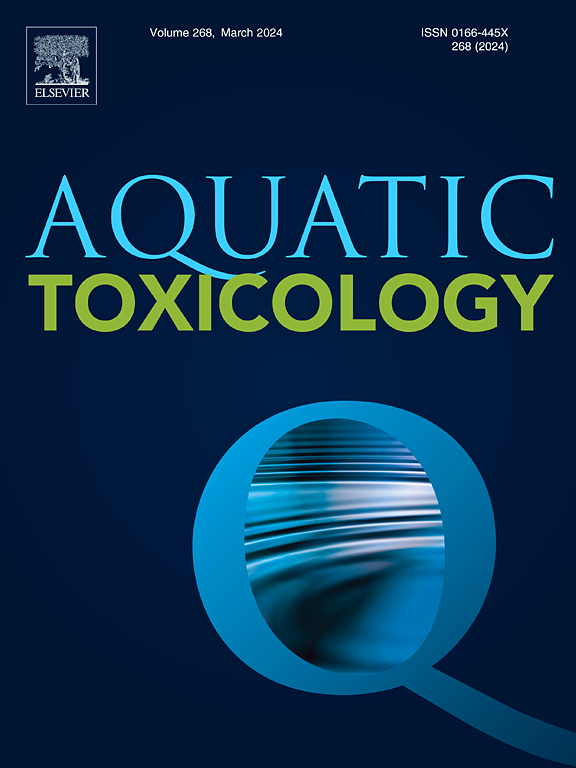Impacts of microplastic accumulation in aquatic environment: Physiological, eco-toxicological, immunological, and neurotoxic effects
IF 4.1
2区 环境科学与生态学
Q1 MARINE & FRESHWATER BIOLOGY
引用次数: 0
Abstract
The presence of microplastics (MPs) in aquatic ecosystem has become a pressing global concern. MPs pose a significant threat to aquatic ecosystems, with devastating consequences for both aquatic life and human health. Notably, freshwater ecosystems are particularly vulnerable to MPs pollution. MPs, characterized by their small size (< 5 mm), have emerged as a ubiquitous environmental pollutant. They exhibit diverse characteristics, including varying sizes, forms, polymer types, and colors. Two distinct categories of MPs exist: primary and secondary. Primary MPs are incorporated into industrial hard materials, cosmetics, and hand cleaners, whereas secondary MPs result from the breakdown of larger plastic products in both terrestrial and marine environments. They enter the environment through various sources, such as household products, clothing, industrial activities, sewage waste and plastic degradation. Aquatic organisms ingest these contaminants, facilitating the transfer of MPs into the food chain and potentially causing severe health problems. This review delves into the bioaccumulation of MPs in fish, highlighting the eco-toxicological, neurological and immunological effects. This review provides an in-depth analysis of innovative solutions for MPs removal and reduction. Finally, we delineate evidence-based strategies to mitigate impacts of MPs, offering valuable insights to inform policy formulations and accelerate the development of sustainable plastic technologies.

水生环境中微塑料积累的影响:生理、生态毒理学、免疫学和神经毒性效应
微塑料在水生生态系统中的存在已成为一个紧迫的全球性问题。MPs对水生生态系统构成重大威胁,对水生生物和人类健康造成毁灭性后果。值得注意的是,淡水生态系统特别容易受到MPs污染的影响。MPs,其特点是体积小(<;5毫米),已成为一种无处不在的环境污染物。它们表现出不同的特征,包括不同的尺寸、形状、聚合物类型和颜色。MPs有两种不同的类型:初级和次级。初级MPs被纳入工业硬材料、化妆品和洗手液中,而次级MPs则来自陆地和海洋环境中较大的塑料产品的分解。它们通过各种来源进入环境,如家用产品、服装、工业活动、污水废物和塑料降解。水生生物摄取这些污染物,促进MPs进入食物链,并可能造成严重的健康问题。本文综述了MPs在鱼类体内的生物积累,重点介绍了其生态毒理学、神经学和免疫学效应。这篇综述深入分析了MPs去除和减少的创新解决方案。最后,我们描述了基于证据的策略,以减轻MPs的影响,为政策制定提供有价值的见解,并加速可持续塑料技术的发展。
本文章由计算机程序翻译,如有差异,请以英文原文为准。
求助全文
约1分钟内获得全文
求助全文
来源期刊

Aquatic Toxicology
环境科学-毒理学
CiteScore
7.10
自引率
4.40%
发文量
250
审稿时长
56 days
期刊介绍:
Aquatic Toxicology publishes significant contributions that increase the understanding of the impact of harmful substances (including natural and synthetic chemicals) on aquatic organisms and ecosystems.
Aquatic Toxicology considers both laboratory and field studies with a focus on marine/ freshwater environments. We strive to attract high quality original scientific papers, critical reviews and expert opinion papers in the following areas: Effects of harmful substances on molecular, cellular, sub-organismal, organismal, population, community, and ecosystem level; Toxic Mechanisms; Genetic disturbances, transgenerational effects, behavioral and adaptive responses; Impacts of harmful substances on structure, function of and services provided by aquatic ecosystems; Mixture toxicity assessment; Statistical approaches to predict exposure to and hazards of contaminants
The journal also considers manuscripts in other areas, such as the development of innovative concepts, approaches, and methodologies, which promote the wider application of toxicological datasets to the protection of aquatic environments and inform ecological risk assessments and decision making by relevant authorities.
 求助内容:
求助内容: 应助结果提醒方式:
应助结果提醒方式:


